Day 1
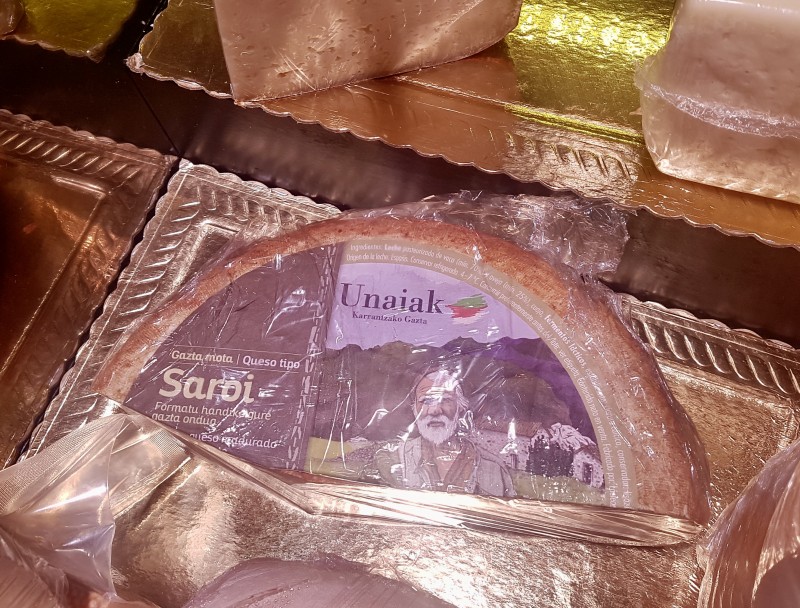
My wife Diana and I have owned this flat for almost five years. It is operated by a local Barcelona company. Last week we parted ways with the manager we had employed for the past four years. Today I met the first of two potential candidates to replace them. I arrived at the meeting with a sheet of carefully prepared questions to ask. However, in very short order, this thirty-something year old woman convinced me that many of my existing assumptions about how flats are best promoted and managed were no longer valid. New technology and ideas were replacing old ways of doing things. The promise was better and easier. While I tend to be an early adopter, the anticipation of significant change in store also made me a little anxious.
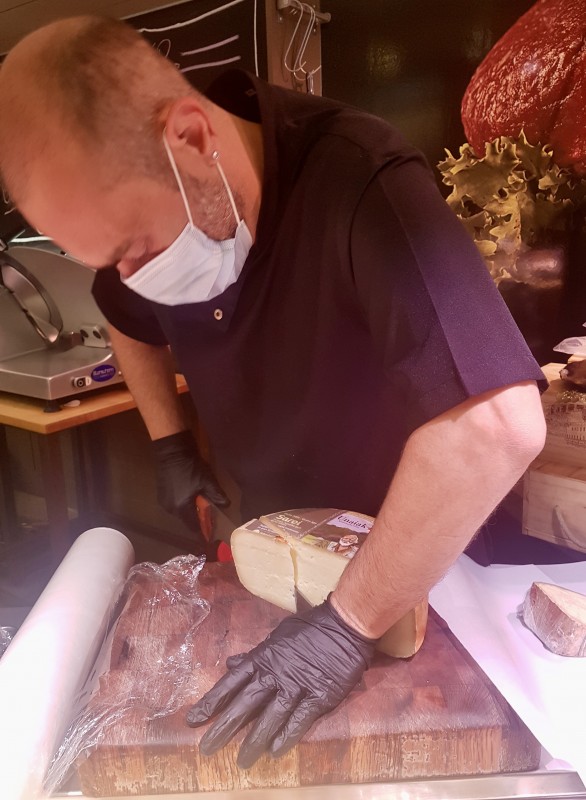
That is a long segue into my decision to symbolically fight progress with today’s sampling of the oldest cheese from the Basque country. This soft and smooth cheese wedge is produced from cow milk (and a bit of butter) in the Northwest of Spain. It is called Saroi Unaiak. The Unaiaks were Basque cowboys, while the legendary Saroi was the first among them to make a cheese that could even make a fox salivate for its taste – versus the temptation of the cow itself. If you like a Manchego, you will like this cheese. It is gentle to cut and delicately flavourful.
Despite this minor backlash, I know you can’t always fight time. But with this cheese, I could for at least a few loving mouthfuls.
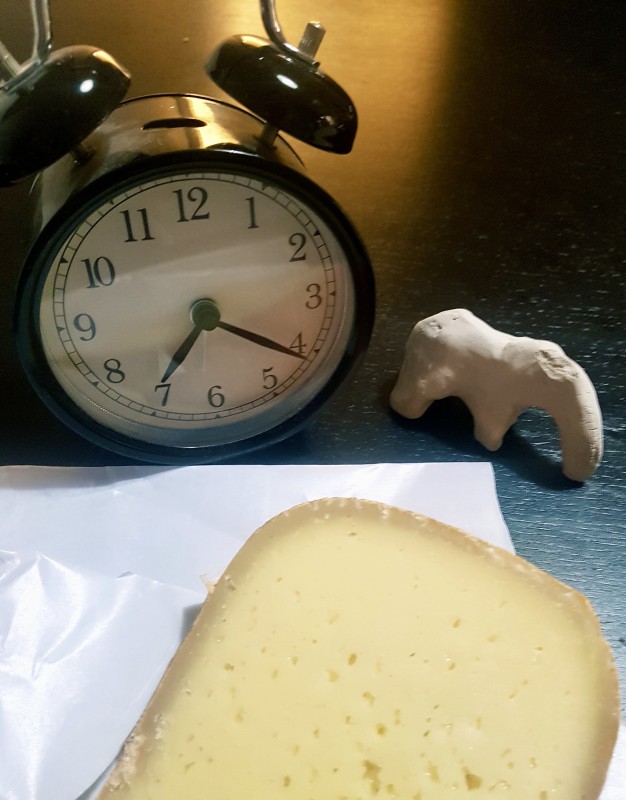
Day 2, Week 2
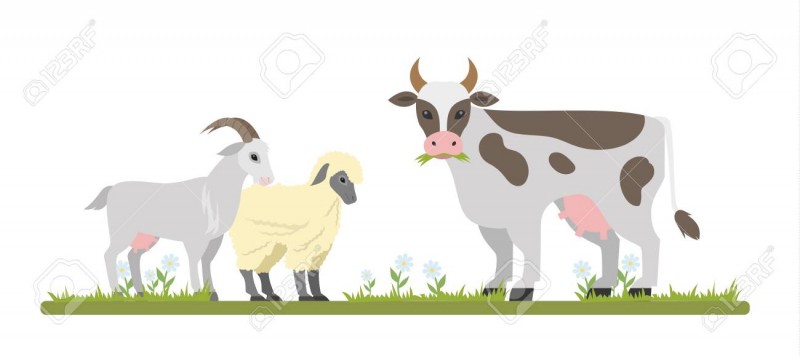
One of the most popular places for sharing a slice in Barcelona is a former underground garage called Parking Pizza. In this large concrete-walled interior space, you sit shoulder to shoulder with other diners at long tables. Every seat has a cushion that can be removed to reveal a hollow, designed to secure your purse or backpack. There was a 35-minute wait for an opening “para dos personas” when I got there at 9:15 pm on a Tuesday.

My companion Moshe is an outdoor adventure guide that I met on a ski trip to Andorra, pre-Covid, last year. He is passionate about “literally” showing people the ropes (note the correct use of the word), especially while on climbing trips in the mountains. That brings me to today’s topic: What are the relative advantages of using milk from sheep, goats or cows in the production of cheese? Please allow me to be your guide through this “curdish” exploration.
The milk from sheep offers farmer’s the chance to create a more buttery, aromatic product. Ya gotta’ love the upside of a higher fat content. On the other hoof, goat’s milk can deliver a touch of spiciness with an acrid flavour profile. The latter is the result of chewing lots of gnarly brambles and thorny grasses.
Cow milk is the best choice for anyone who wants their cracker-topper with a milder flavour, heavier mouthfeel, and more creaminess. Obviously, all these descriptors are scaled based on the diet and digestion of the cheese producing animal.

So, that’s it – no review today! As per the restaurant we dined in, I decided to park the cheese I bought today until tomorrow.
Day 3, Week 2
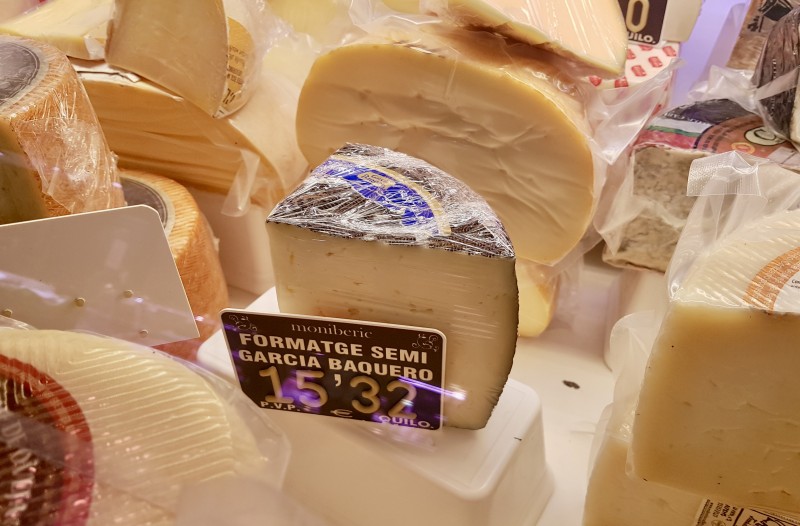
The coastline off Barcelona faces southeast, so every sunrise is shaped by a view of the Sea and the mountains beyond Badalona to the North. In short, it’s often worth the effort to greet “el sol nuevo” somewhere along the beach. Hence the reason behind the creation of the Sun Runners Meetup group, which gathers every Wednesday and Friday for a chance to run or walk together in the gleam of the dawning day.
What is Meetup? It’s a website that allows people with a common interest to connect with others from the same location. I have previously joined a group of road cyclists and skiers here in Spain. Today I was a Sun Runner (bad knees means walker actually). And, today’s cheese is a mix of many different characteristics, a real medley like the people in a typical Meetup.
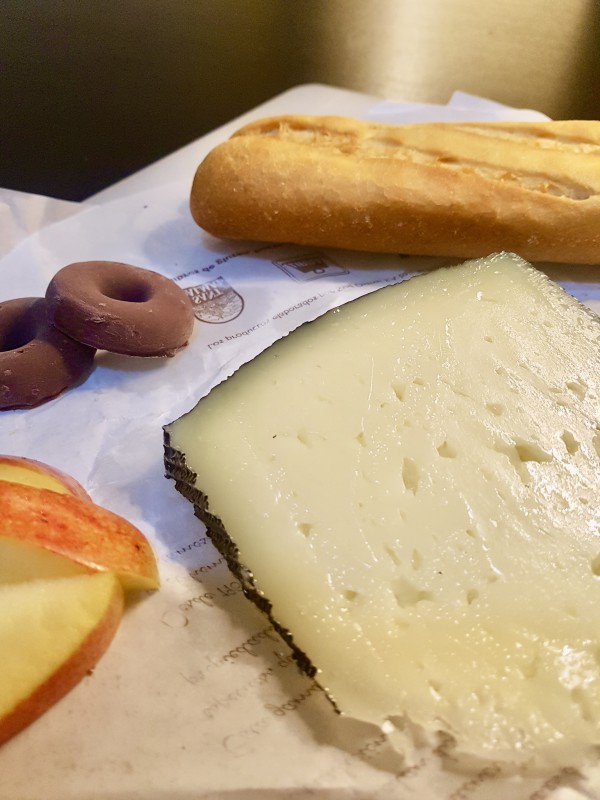
Imagine a cheese that combines the tones of fresh yoghurt and cream, with hints of sweet butter and toasted milk, and an aftertaste of cinnamon and nuts. That’s the profile of Garcia Baquero. It is Semi-cured so the texture is moderately soft. Its appearance is a slight shiny beige.
I thought this cheese was very OK and reminds of the sunrise I saw this morning. It was pretty but not as boldly coloured as I had hoped to reward my effort of getting up and down to Barceloneta so early. In another odd parallel, I actually liked the aftertaste best with the cheese, and the post-workout coffees best with the meet up.
Appropriately, here’s the advertising line for the cheese: “So good that it brings your friends together.” In the same vein, so does the next Meetup I might try next thursday: “Vinos, Quesos and Fun.”
Day 4, Week 2
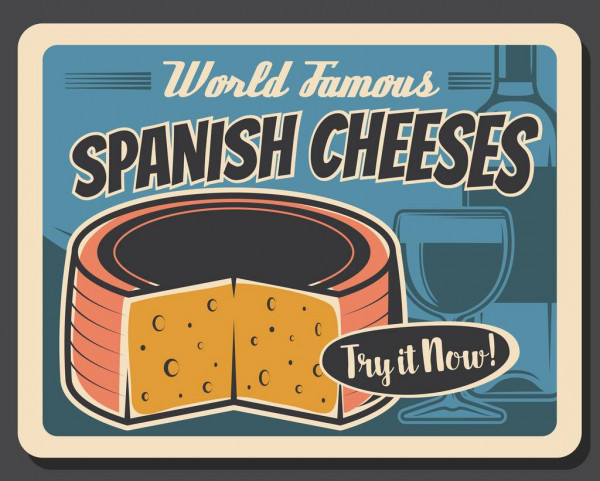
Emi Carles is a butcher shop/delicatessen only a block from our flat selling all manner of foods that would be perfect on any tapas platter. I was there this afternoon eyeing their selection of cured meats, pastes, breads, condiments, olives, jams, pickles, etc. Of course, my prime directive was to sample a new curd. With that in mind, I stared through the glass case displaying the store’s modest selection of fine formatge (that’s Catalan for cheese).
The proprietor was eager to serve me and enthusiastically described his selection of Spanish product, which largely consisted of Manchegos. There are well over 100 different varieties of cheese this in this country, with each region offering up its own specialties from fresh to cured, and fermented to those veined in blue. While many might debate the relative merits of Manchego, no one can deny that it is truly the most popular of them all – the “big cheese” you might say. It is from the province of La Mancha, which sits in the heart of Spain, extending south and east from Madrid.
How good is it? Well, it seems even William Shakespeare was fond of cheese from the land of Don Quixote based on this quote from Henry IV: “I had rather live with cheese and garlic in a windmill.”
I did buy a special Manchego, which I’ll post about tomorrow. But for today, I thought it better to link you to a short video that describes what this cheese is and how it is produced. Hopefully at its conclusion, you’ll have a better understanding as to why this sheep milk product is the most famous of all the Spanish cheeses – Baa none!
Day 5, Week 2
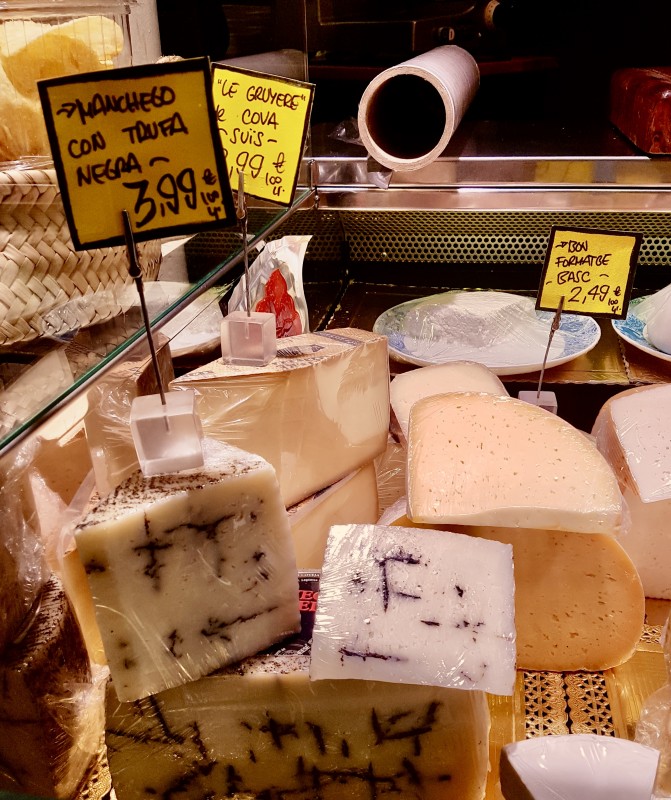
Yesterday I went for a bicycle ride up the mountain that keeps watch over the port of Barcelona. At its top, El Castillo sits 177 meters above the Med. There is a small labyrinth of route options that lead to this fortress. But some choices veer too far the wrong the direction, while others simply dead end at a parking lot. Clearly, my road to success required some persistent exploration!
This got me thinking about my hunt for Spanish Queso Tour, and the increasing challenge it was becoming to find a new cheese to sample. With well over 100 Spanish varieties to discover, they are certainly out there, but I am reaching the limit of my local shops. It seems that I will soon have to travel outside my neighbourhood and eventually outside my city to find something new. In this spirit, I chose a fungus-based flavouring for my post today.
It’s called “Manchego con trufa negra” or Machego with black truffle. When I bought it, I was thinking of the swine that farmers have used for generations to sniff out truffles attached to tree roots. Now I feel like pig hunting for cheese varieties!
In the case of this cheese, Spanish producers inject the truffle along with extra virgin olive oil to create the characteristic black veins. The result is very pleasant all around. I really enjoyed the soft texture and elegant look. It’s definitely a tapas serving dressed to impress, with a designer label and tasteful black style lines.
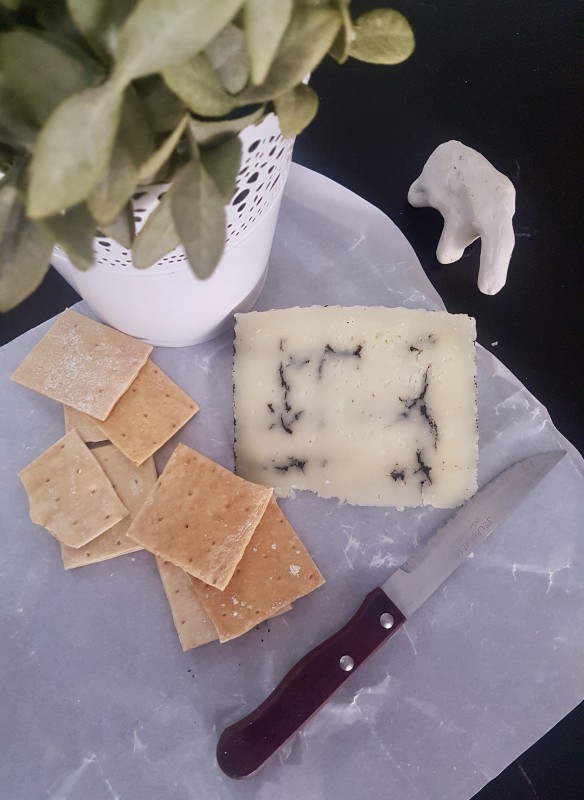
Back to the truffle hunters. In reality, pigs have long been out of favour. Today, the trained truffle dog has the preferred nose. I guess in the same way that Garmin now helps the lost cyclist and Google the ambitious cheese blogger.
Day 6, Week 2
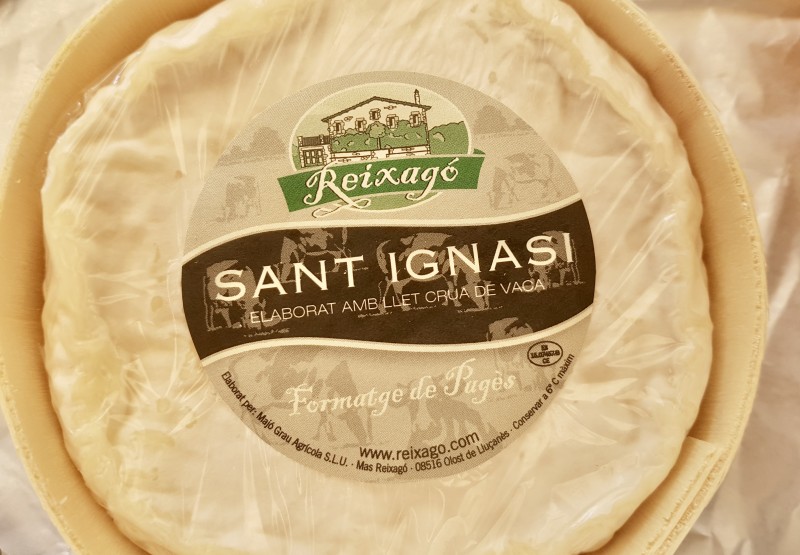
Today’s cheese is a real cracker. Actually, it would be tough to serve this Catalan specialty on anything biscuit-like. At issue is the creamy goo that oozes out of it when you remove the small wheel from its wooden container and cut into it. Fortunately, I bought a small baguette to do the job. More on my tasting in a moment.

Today is also day two of La Mercé festival. This celebration of mostly Catalan culture honours Mare de Deu de la Mercè (Mother of God of Mercy). Quite often it rains at some time over the three-day event. Por qué? Because prior to La Mercé being ratified as the patron saint of Barcelona, the city already had one: Santa Eulàlia. So, Eulália weeps every year because its citizens have now forgotten about her.
Now back to the cheese.
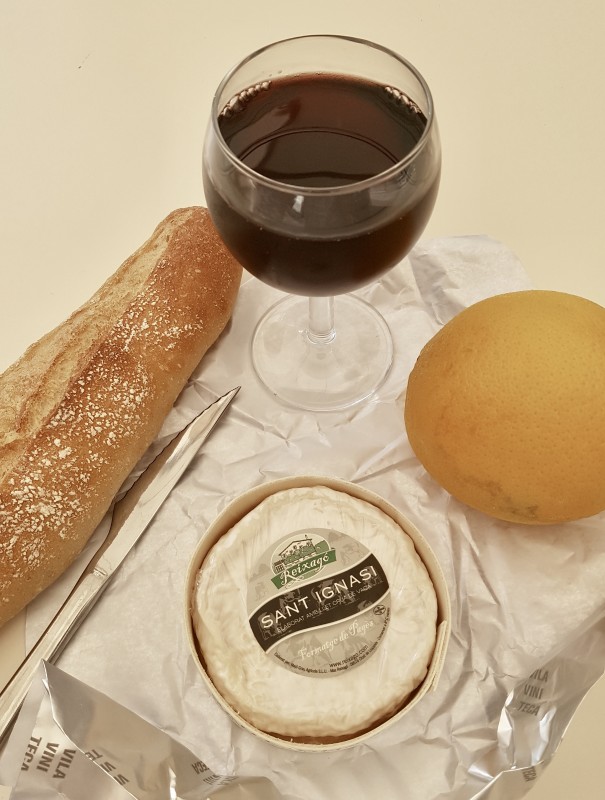
It is called Sant Ignaci, a cow cheese matured for three weeks in mold and wonderfully flavourful. I found myself licking the wrapper and my fingers at the end of the tasting – hungry for just a little bit more ooze! I had a knife, but this is a cheese best applied with a spoon. It is just shy of being enjoyed with a straw.
I was waiting for two weeks to find a runny cheese and here she is. Her arrival almost brought tears to my taste buds and is well worth creating a festival around.